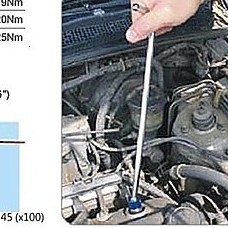Search the Community
Showing results for tags 'classification'.
-
https://www.channelnewsasia.com/news/singapore/saf-review-pes-system-deployed-more-roles-servicemen-14305586 SAF to review PES medical classification system, paving the way for servicemen to be deployed in more roles SAF national servicemen maintenance work Full-time national servicemen carrying out maintenance work on Bionix parts. (Photo: Jeremy Long) By Aqil Haziq Mahmud 01 Mar 2021 01:33PM (Updated: 01 Mar 2021 01:40PM) Bookmark SINGAPORE: The Singapore Armed Forces (SAF) will review the use of the medical classification system and physical employment standards (PES) system so it can better deploy servicemen in more roles according to their abilities. Currently, servicemen are assigned a PES status based on their medical condition and this is one factor in determining their vocation during National Service (NS). For instance, servicemen with the highest status of PES A and B1 are suitable for combat vocations, while those with PES B2, B3 and B4 are suitable for some combat vocations and all combat support vocations. “The review will focus on the operational effectiveness of each individual, instead of the binary classification of whether one is combat-fit or non-combat-fit,” the Ministry of Defence (MINDEF) said in a factsheet on Monday (Mar 1). “Medical exclusions that used to limit deployments may no longer be relevant in today’s operating context or with the use of technology.” Defence Minister Ng Eng Hen said on Monday that this "old system is outdated and retrogressive" for many roles in the next generation of the SAF. "Moving forward, the SAF will use an updated and refreshed medical classification system, which together with its PES system, will better match vocations and deployment of national servicemen," he added in his ministry's Committee of Supply speech. "The new system will also take into account their civilian jobs and skillsets." READ: As SAF vocations go high-tech, over 600 servicemen get deployed in previously ineligible roles With that in mind, MINDEF said the SAF will explore the use of functional assessments to determine servicemen’s deployability in specific vocations, such as for the selection of transport operators - a combat service support vocation. “The assessment replicates the physical demands required for daily operations, enabling the SAF to better match servicemen’s functional abilities to the role’s actual demands,” MINDEF said. If the trial is successful, Senior Minister of State for Defence Heng Chee How said on Monday it could be extended to other vocations like tank operators. The review comes amid falling national birth rates and a shrinking pool of national servicemen, with the SAF announcing as early as 2017 that it was reviewing vocation deployment criteria to tackle manpower challenges. In 2018, then-Second Minister for Defence Ong Ye Kung revealed that the SAF had deployed more than 600 servicemen in vocations they were previously ineligible for, in areas like maintenance where the role of an automotive technician has evolved with technology. “The SAF is leveraging technology and redesigning jobs to be able to deploy servicemen of varying physical abilities in a wider range of operational roles,” MINDEF said on Monday. “This would enable a greater pool of national servicemen to be able to contribute in roles that they would not have been eligible for previously, maximising their contributions in NS without compromising operational effectiveness or safety.” PREP4NS TO BE EXTENDED TO MORE GYMS MINDEF also said on Monday that it is working with Sport Singapore to extend the Pre-Enlistees Exercise Programme for National Service (PREP4NS) to 24 ActiveSG gyms around Singapore, making it more convenient for pre-enlistees to improve their fitness. READ: NS pre-enlistees to get free SAFRA gym membership in November trial PREP4NS, which was launched in 2019 as a trial by MINDEF and SAFRA, provides eligible pre-enlistees with a complimentary one-year SAFRA Energy One gym membership. It aims to encourage pre-enlistees to improve their fitness ahead of their individual physical proficiency test (IPPT) and the physical demands of NS. About 5,000 pre-enlistees have been granted the PREP4NS membership since the launch of the trial, with more than 80 per cent having visited SAFRA gyms since mid-June last year, when Singapore moved into Phase 2 of reopening. “Almost all pre-enlistees who had provided feedback found the initiative useful in helping them meet their IPPT goals. Many also reported improvements in their IPPT scores,” MINDEF said. “It was observed that 33 per cent more pre-enlistees attained a gold after receiving their PREP4NS membership.” Registration for the ActiveSG gym membership will be announced later this year. EXPERTISE DEPLOYMENT OF NSMEN Moving on to operationally ready national servicemen (NSmen), MINDEF said that it would increase the areas that NSmen with specialised civilian expertise can be deployed to. MINDEF will also set up a dedicated deployment centre within the SAF to oversee the expansion of this expertise deployment. READ: Improving NS experience: New NS Hub brings together pre-enlistment medical, IPPT, e-Mart It had announced in 2019 that NSmen with specialised civilian expertise can be deployed to new roles that require such skills under the Expertise Conversion Scheme. Previously, NSmen had to complete the full 10-year training cycle before converting to a role that allows them to use their civilian expertise. “MINDEF/SAF will continue to build on this scheme and systematically expand opportunities to deploy NSmen with relevant civilian expertise,” it said on Monday. “This will serve to maximise the contributions of NSmen and support the SAF’s operational requirements.” (Infographic: MINDEF) MINDEF also announced that it is making it easier for eligible NSmen to attend the Health Screening Programme (HSP), which ensures they are healthy enough to safely participate in strenuous activities during in-camp training. The HSP is for NSmen aged 35 and above who are IPPT-eligible, and previously had to be completed over two visits to a medical centre in camp. Since October 2020, MINDEF said it has streamlined the HSP such that most NSmen can complete it in a single session instead of two. It will also set up a HSP centre in the Military Medicine Institute at Kent Ridge by mid-2021 to provide NSmen with an alternate and more central location. “NSmen can also expect shorter booking and waiting times for their HSP appointments,” it said. Moving forward, MINDEF said the SAF is exploring additional ways to provide NSmen with more convenience and flexibility for NS fitness activities, to motivate them to keep an active lifestyle and ensure that they remain operationally ready. “More details on these initiatives will be announced in due course,” it added. Source: CNA/hz(ta)
- 18 replies
-
- 3
-

-
.png)
-
Ok. So apparently "light goods vehicle (LGV)" and "goods-cum-passengers vehicle (GPV)" are different. As per LTA, LGV must be owner under a business or hawker license. https://www.lta.gov.sg/content/ltaweb/en/roads-and-motoring/owning-a-vehicle/registering-your-vehicle/registration-of-goods-vehicles.html Whereas GPV can be owned personally (but same ARF as private car, and non-refundable). Also, for the 70km/h speed limit, apparently it only applies to LGV and small bus (p-plate). https://www.lta.gov.sg/content/ltaweb/en/roads-and-motoring/road-safety-and-regulations/road-regulations.html https://www.onemotoring.com.sg/content/onemotoring/en/lta_information_guidelines/modifications_and_vehoffences/modification_guide/revised_speed_limit.html Note that P-plate small bus also must register under business. So does this mean that GPV does not have to adhere to 70 km/h speed limit?
-
Sibeh confusing. I don't know what is what any more. Why can't they follow WW2 era classifications based on tonnage?
- 59 replies
-
In the wake of the economic downturn, it has been reported that help would now be given not just to the low (income) class but also the middle class (specifically, the low-middle class). In the same report, the low (income) class was defined as a family with a total household income of $1500 and below, while the low-middle class was defined as those with a total household income of $1501-$2500. Not too long ago, during the foreign-workers-domitory-in-Serangoon-Gardens saga, it was reported that those staying in the landed properties in Serangoon Gardens were middle class. Any one here knows how are households classified in Singapore in terms of income/class? I'm confused...
-
Need adv on the above - classification number and whether this chemical is consider toxin and import need to apply special import permit Anyone out there who works for forwarding company and is familiar with import classification - can you kindly adv. TIA
- 12 replies
-
- Import
- classification
- (and 4 more)
-
I've always been fan of carbuyer(it's free!!) and even more so after it went online. But there something bugging me over their car buyer guide in the print version. They have one of the most complete new car prices listed there by most of the makes found in Singapore. But the way they classify the car seems a liitle strange. For example, the Toyota Camry is classify as a BS(Big Sedan) while the Mazda 6 is a MS (Medium Sedan). If we look at the specs, the basic model for both starts at 2L and they are both fairly large 4-door sedan. The thing that bothers me is that what make the Camry a BS while the Mazda 6 a MS. The same can be said of the Accord, Cefiro, Sonata, Magentis whch are all BS, while the Legacy, 407 and Mondeo are all MS. For me, they are all of the same class. So what is the thing that sets them apart?
- 4 replies
-
- Classification
- cars
-
(and 1 more)
Tagged with:
-
Gotten this from "somewhere out there.." Hope this is useful... Amplifier Classification Information Amplifier classes: Audio power amplifiers are classified primarily by the design of the output stage. Classification is based on the amount of time the output devices operate during each cycle of signal swing. Also defined in terms of output bias current, (the amount of current flowing in the output devices with no signal). Class A operation is where both devices conduct continuously for the entire cycle of signal swing, or the bias current flows in the output devices at all times. The key ingredient of class A operation is that both devices are always on. There is no condition where one or the other is turned off. Because of this, class A amplifiers are single-ended designs with only one type polarityoutput devices. Class A is the most inefficient of all power amplifier designs, averaging only around 20%. Because of this, class A amplifiers are large, heavy and run very hot. All this is due to the amplifier constantly operating at full power.The positive effect of all this is that class A designs are inherently the most linear, with the least amount of distortion. Class B operation is the opposite of class A. Both output devices are never allowed to be on at the same time, or the bias is set so that current flow in a specific output device is zero when not stimulated with an input signal, i.e., the current in a specific output flows for one half cycle. Thus each output device is on for exactly one half of a complete sinusoidal signal cycle. Due to this operation, class B designs show high efficiency but poor linearity around the crossover region. This is due to the time it takes to turn one device off and the other device on, which translates into extreme crossover distortion. Thus restricting class B designs to power consumption critical applications, e.g., battery operated equipment, such as 2-way radio and other communications audio. Class AB operation allows both devices to be on at the same time (like in class A), but just barely. The output bias is set so that current flows in a specific output device appreciably more than a half cycle but less than the entire cycle. That is, only a small amount of current is allowed to flow through both devices, unlike the complete load current of class A designs, but enough to keep each device operating so they respond instantly to input voltage demands. Thus the inherent non-linearity of class B designs is eliminated, without the gross inefficiencies of the class A design. It is this combination of good efficiency (around 50%) with excellent linearity that makes class AB the most popular audio amplifier design. Class AB plus B design involves two pairs of output devices: one pair operates class AB while the other (slave) pair operates class B. Class D operation is switching, hence the term switching power amplifier. Here the output devices are rapidly switched on and off at least twice for each cycle. Since the output devices are either completely on or completely off they do not theoretically dissipate any power. Consequently class D operation is theoretically 100% efficient, but this requires zero on-impedance switches with infinitely fast switching times -- a product we're still waiting for; meanwhile designs do exist with true efficiencies approaching 90%. Class G operation involves changing the power supply voltage from a lower level to a higher level when larger output swings are required. There have been several ways to do this. The simplest involves a single class AB output stage that is connected to two power supply rails by a diode, or a transistor switch. The design is such that for most musical program material, the output stage is connected to the lower supply voltage, and automatically switches to the higher rails for large signal peaks. Another approach uses two class AB output stages, each connected to a different power supply voltage, with the magnitude of the input signal determining the signal path. Using two power supplies improves efficiency enough to allow significantly more power for a given size and weight. Class G is becoming common for pro audio designs. Class H operation takes the class G design one step further and actually modulates the higher power supply voltage by the input signal. This allows the power supply to track the audio input and provide just enough voltage for optimum operation of the output devices. The efficiency of class H is comparable to class G designs.
- 1 reply
-
- Amplifier
- Classification
-
(and 1 more)
Tagged with:




